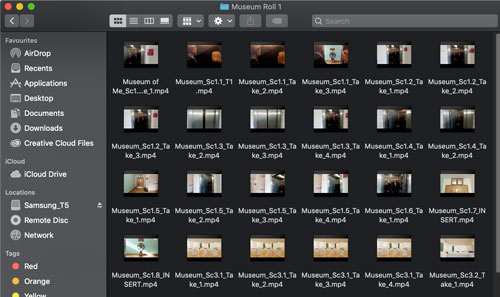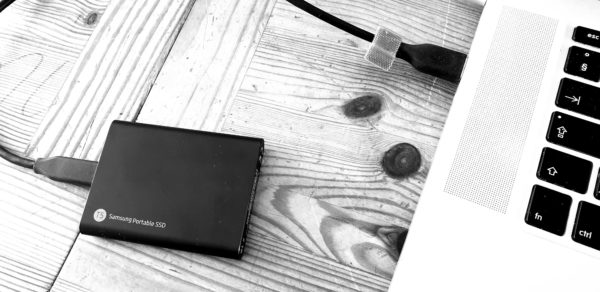Diary of a Smartphone Filmmaker: March 2019
Last week we shot episode 4 of Silent Eye in London. Everyone did a great job and we finished with time to spare. Since then I have returned to my cave to put everything together and make the footage into a short film.
We started with a 10 page screenplay. The challenge is to create a film which maximises the potential of the script. I talked a bit about directing last week. But one other thing to consider about directing a movie is that the best directors can turn good screenplays into great movies.
There are thousands of examples in the history of film, but one that always springs to my mind is the film Drive by Nicolas Winding Refn.
I’ve seen the film. Plus I’ve read the screenplay (by Hossein Amini) and the book (by James Sallis) which it was adapted from. Why? Not because I’m a huge fan of the movie, but more because I was very curious to see the journey from book to film.
To me the book came across as a straightforward crime thriller. Obviously, Sallis is more than your average novelist, but what I’m saying is that the book and the screenplay could have been shot as a straightforward crime thriller. There’s little in either the book or the screenplay to indicate what Refn does with it.
Because Refn is (rare these days) a filmmaker who does something unexpected, the movie is a very different creature to the book. My first reaction to the film was either it was made with terrible taste, or it was soaked in irony. I’m going with the latter – and when Ryan Gosling revealed he played the role as a guy who thought he was the hero in a movie, then that seemed to confirm my opinion.
“Essentially, the movie is about a man who is psychotic,” says Refn about Drive. “But not in a bad way – he’s not psychopathic, he’s psychotic.”
At a basic level, a director’s job is to get all the footage needed to cover the script and good performances from the actors (and crew). But rising above that, the director can impose their vision on the production so that the final movie is unique to them. This means when you watch a Refn movie, you know it’s by him without reaching for the IMDb credit list.
But how many times do we stream a movie from Netflix and know who the director is just from the style of it? And I’m guessing this is down to the fact that giving a director like Refn the freedom to direct in his own style is a risk investors are increasingly reluctant to take.
Anyway, back to smartphone filmmaking…
My first job was to collect all the video files from the phones and SanDisk Ultra 64 GB Dual Type-C USB 3.0 Flash Drives I stored them on during the shoot. We had some minor problems with file management which meant I had to use Andrea’s smartphone to shoot 4 shots.
For the last episode, I simply used my 2 Samsung S9 phones and there was enough memory space and battery power to last the whole day. This worked fine on the first day of episode 4. But on the second day, my 2nd phone decided to log me out of Google which meant FiLMiC Pro stopped working (I got a “you have not paid for this app” message).
Of course I couldn’t remember my password to log back in. So eventually I reset my password and FiLMiC Pro worked once more.
I also had an issue with footage I had on a miniSD card in one of the S9s. In FiLMiC Pro you can set where you want the video to be stored when you shoot it. As one phone has a miniSD card, I opted to store it there until full, then switched to the phone’s internal memory.
To remove the footage from the phones the first time, I simply used the 2 mini flash drives plus the ScanDisk memory drive app which came with them. Using the app I navigated to the Filmic Pro folder where the videos were stored. Then selected that folder and used the app’s move function to place the entire folder and contents on the ScanDisk drive.
The problem was, the 2nd time I did this, the miniSD card showed no Filmic Pro folder. I searched the whole phone file directory a few times, but the video files could not be found. However, in the FiLMiC pro app, the videos where listed – so they were on my phone at least.
But how to get off the phone if I couldn’t located them? In the end, I had to use the FiLMiC Pro app’s sharing function and send them to my MacBook via WiFi. With 26gb of files, I left it running through the night. In the morning, the files had transferred – phew.
Logging the footage
If you are curious how I go about organising footage and files, I will explain further. So I place each batch of takes into folders which I called “rolls” (like rolls of film) on my external Samsung T5 drive. Then I go through each take, listening to the first few seconds. Barnaby announces the scene, slate and take number each time. So I write this information into the name of the file, to make it easier to locate shots while editing.

Our sound recordist Barnaby has sent me the audio files. So now I have the job of editing the footage and audio into something resembling the story in the screenplay. Once I’ve done that, I will move onto the CGI elements of the film and it looks like there’s going to be several weeks worth of work there.
Eager to learn more?
Join our weekly newsletter featuring inspiring stories, no-budget filmmaking tips and comprehensive equipment reviews to help you turn your film projects into reality!
Simon Horrocks
Simon Horrocks is a screenwriter & filmmaker. His debut feature THIRD CONTACT was shot on a consumer camcorder and premiered at the BFI IMAX in 2013. His shot-on-smartphones sci-fi series SILENT EYE featured on Amazon Prime. He now runs a popular Patreon page which offers online courses for beginners, customised tips and more: www.patreon.com/SilentEye


